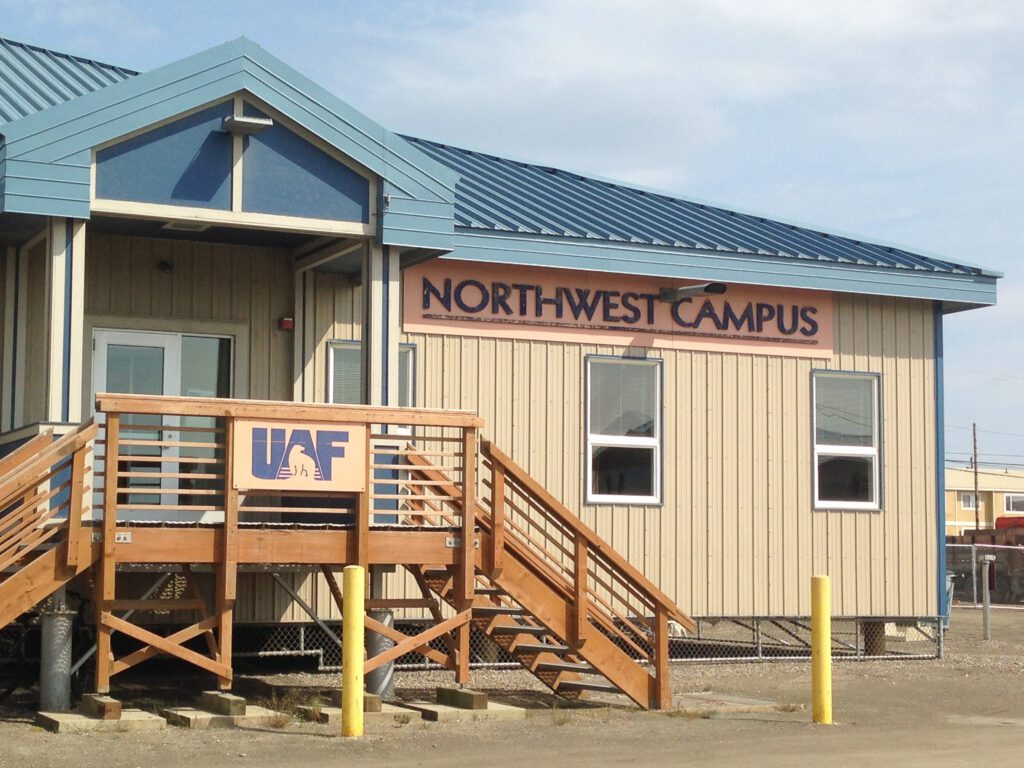As Bill Walker formally takes on the job of Alaska’s Governor starting Monday, he faces unprecedented low oil prices that will have far-reaching implications for funding state projects, including a controversial mining road in northwest Alaska.
Walker has been a proponent of a state gas line and other development projects leading up to his election, but the price of a barrel of oil is now below $80. Multiple factors spread across a global economy have contributed to the drop, including sliding prices in the Middle East and increased oil production in the Lower 48. Regardless of the causes, the effect on Alaska is the same: with oil revenues making up more than 90 percent of the state’s budget, a low price for a barrel of oil means millions of dollars once expected to flow into the state treasury simply won’t be there in the future.
Walker said that means the biggest problem facing future projects will be funding.
“Oil in the mid-$70s [a barrel] is a huge shift in our revenue future right now,” he said Friday. “When I started this campaign we were at $7 million a day deficit, basically spending our savings. And then now we’re at $10 million a day in deficits, I’m told.”
That, he emphasized, “is a significant change to circumstances.” Which means every project “gets a second look.”

One project in western Alaska getting that “second look” is the proposed Ambler mining road, a controversial 220-mile corridor through the state’s Interior to a copper and zinc prospect near the community of Ambler. Begun under former Governor Sean Parnell’s “Road to Resources” initiative through the state Department of Transportation back in 2010, the Ambler Road project has cost the state at least $10 million in initial fieldwork. Estimates for the road from DOT put the final cost for construction of the preferred road around $430 million—roughly $2 million per mile—with alternative proposals projecting construction costs from $510 million to $990 million.
Since 2013, the project has been financed by AIDEA—the Alaska Industrial Development and Export Authority—a public corporation that has, among various other projects, financed a 52-mile road as part of the DeLong Mountain Transportation System that serves the large zinc-producing Red Dog Mine about 90 miles north of Kotzebue. AIDEA’s own estimates for the road’s construction range from $190 to $300 million; Dowl HKM, a contractor on the Ambler project, has offered its own estimates between $200 and $400 million.
AIDEA spokesperson Karsten Rodvik said, since taking over the Ambler road project, the corporation has “been conducting a very active community outreach program. We’ve had more than 35 community meetings throughout the region.”
Those meetings have met mixed reactions. During a June meeting in Kotzebue, which gathered stakeholders from several communities along the proposed route of the road, some said they would reserve judgement until the federally-mandated environmental impact statement was complete. That’s in contrast to August meetings in the interior, which saw the native corporation from Evansville pass a resolution formally opposing the road.
Rodvik said more meetings are planned for this month: at the Westmark Hotel in Fairbanks, from Dec. 16-17, to which are invited “community leaders from throughout corridor,” as well as state and federal agencies. Rodvik described the meetings as “similar” to June’s meeting in Kotzebue.
In addition, Rodvik said AIDEA plans to have Maryelen Tuttle with project contractor Dowl HKM at the Western Arctic Caribou Herd Working Group meeting in Anchorage Dec. 17-18.
They will be the last meetings before AIDEA submits its application for the EIS (which, once complete, is set to launch another round of public meetings for feedback). “We continue working though the process to submit our EIS permit application, and we expect to have that submitted by the end of the year,” Rodvik said. According to AIDEA’s presentations this past summer, the EIS process itself could take several years to complete.
Like all projects going on in the state, Rodvick said the Ambler road proposal is now going to Governor Walker’s desk for review, but he added that AIDEA alerted Walker’s chief of staff of the two December meetings and was “told to go head” with the meetings. Walker himself said that review depends not only on financials but the outreach process undertaken so far.
“In concept, I like resource development, responsible development. I think that’s a good thing,” Walker said. “What I need to make sure is … one, given where we are financially now, with the price of oil, is that something that is realistic to continue to do? Secondly, I need to make sure the public process has been complied with, and that those [who] potentially would be affected by that decision, by that road [have had input on the project].”
As the administration of Governor Bill Walker continues to plan the coming year with the state’s shrinking oil revenues in mind, neither AIDEA nor Walker could say what the future holds for the Ambler road.
Editor’s Note: a version of this story appeared online that referred to AIDEA as a “private corporation.” The above text reflects a correction that AIDEA is in fact a public corporation.







